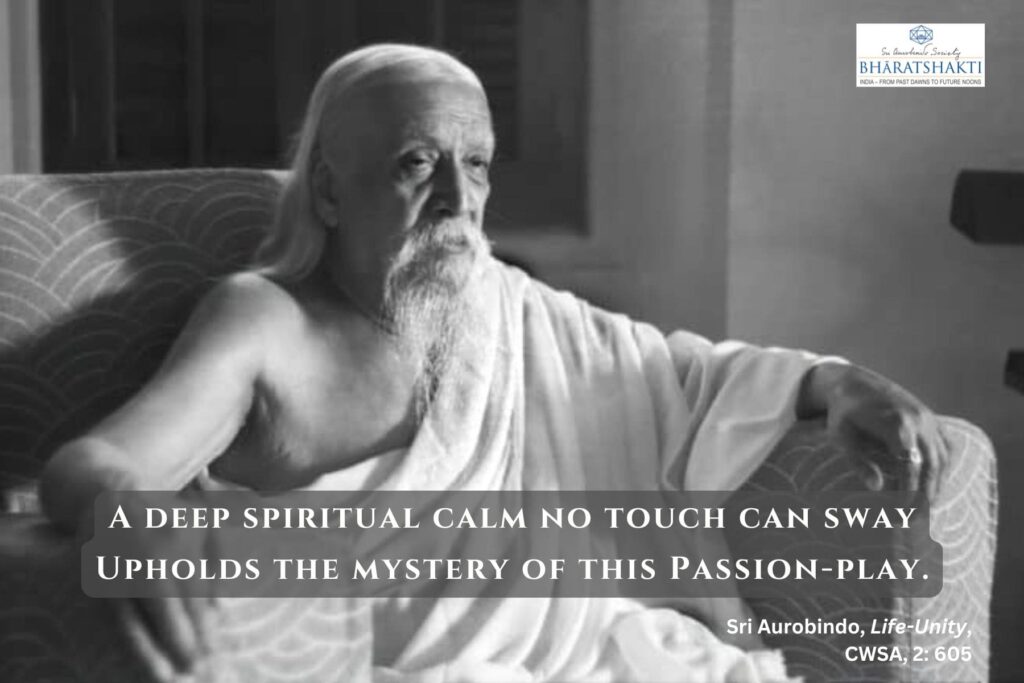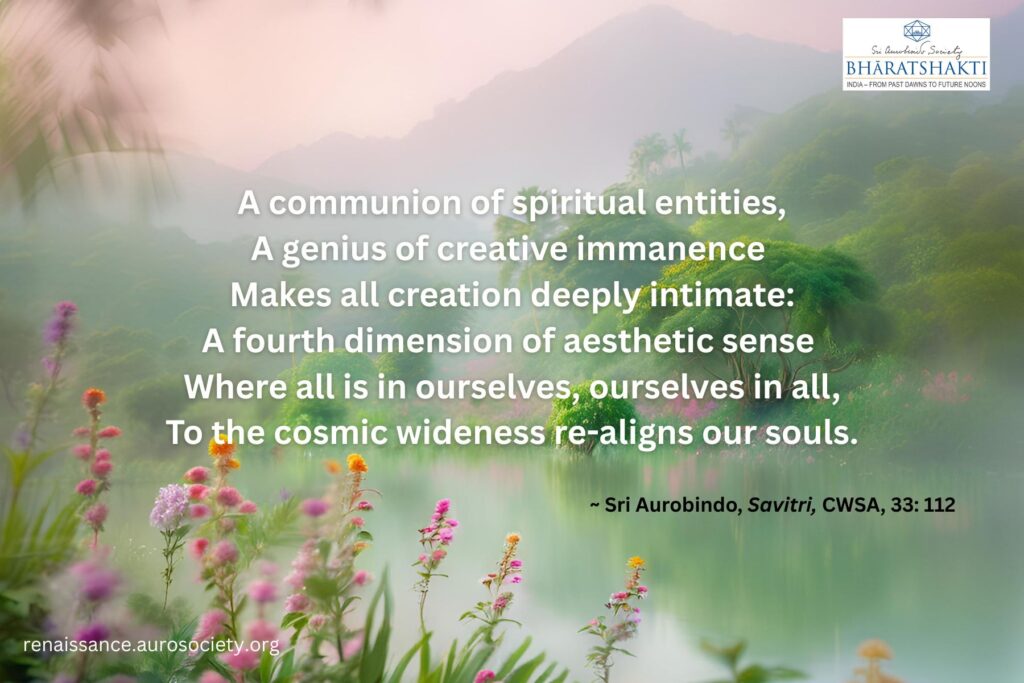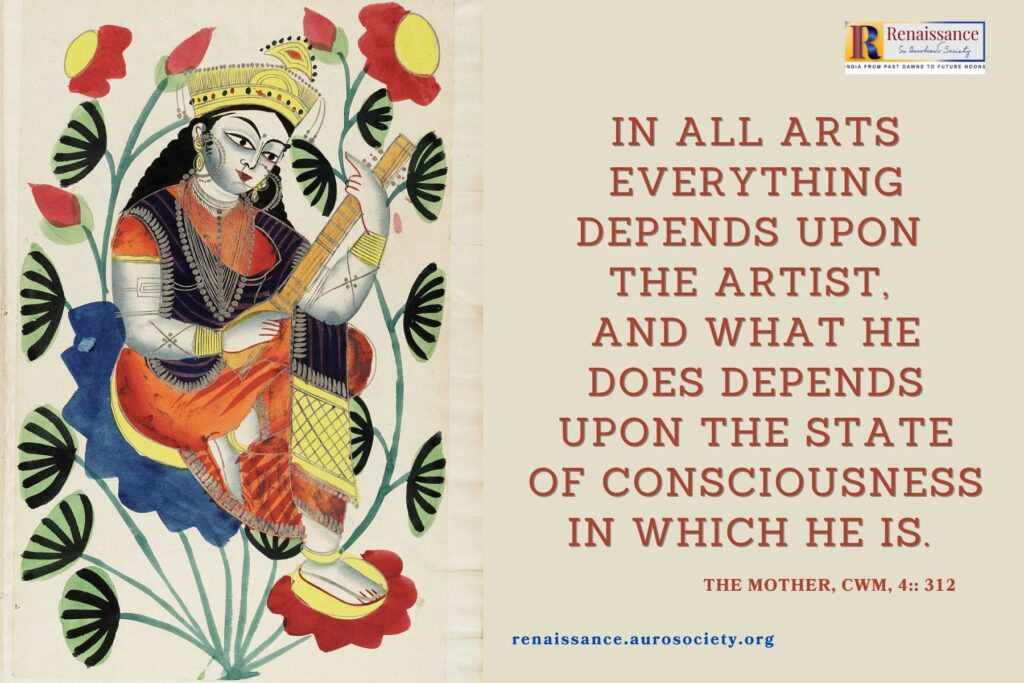Volume V, Issue 2
Author: Nolini Kanta Gupta
Editor’s note: As we celebrate another anniversary of the Golden Day, the Day of Supramental Manifestation, the day which marked the beginning of a New World, let us contemplate on our destiny as human race. At this critical turn of human history, man must choose his destiny — to become a new man with a new consciousness or to go down into inconscience and no more be a man.
This essay by Nolini Kanta Gupta was first published in Sri Aurobindo Circle, 1960. We have made a few minor formatting revisions for the purpose of online reading. We open with a relevant quote from Sri Aurobindo.
. . . the world itself is a mighty labour of a vast Life-Spirit and man the present doubtful crown on earth and the struggling but still unsuccessful present hero and protagonist of its endeavour or its drama. A great human culture must see this truth in some fullness; it must impart some conscious and ideal power of self-effectuation to this upward effort.
~ Sri Aurobindo, CWSA, Vol. 20, pp. 151-152

Anthropologists[i] speak of a very interesting, if not strange biological phenomenon. A baby monkey’s face, it seems, is much nearer to the adult human face than to its own form when adult and grown up. Also, the characteristic accentuations that mark out the grown-up ape come in its case too soon, but the human being continues, generally and on the whole, the stamp of his early, i.e., immature animality throughout his life.
The rough and bold blotches, the rude and crude structures that make up the adult simian face, meaning all the specialisation of its character are not inherited by man; man retains always something of the fragility and effeminacy of the child. Reference is made to the fore-cranium proportion, delicate jaws corresponding smaller teeth, shortened cranial base, expanding brain, bulging forehead, face retracted neatly beneath the brow which are characteristics of the simian baby. There is a lack of a certain forceful hard masculinity that becomes so dominant in the ultimate phase.
This phenomenon is akin and may be linked to the other one also pointed out by anthropologists. A new species, it is said, grows not out of a mature, fully developed, that is to say, specialised type but out of an earlier, somewhat immature, undeveloped, non-specialised type. The new shoot of the genealogical tree branches out not from the topmost, the latest stem, but from one just below it, an earlier stock. The latest means the most developed, that is to say, the most specialised, and that means fossilised – barren; nothing new can be produced out of that, it can repeat only what was before so long as it does not die out and perish.
The aboriginal types that have survived today are, it has also been pointed out, a growth towards decline and deterioration, owing to a stereotyped functioning and a consequent coarsening and hardening of traits, both psychological and physical, a loss of plasticity, loss of the “early innocence.”
The continuance and maintenance of an innocent baby animality in man shown in his physical features has been termed reversion to type or foetalisation. Some declare that for man at least it is a sign of weakness, a possible incapacity to face squarely the blows of life and nature.
This is due to culture and refinement that makes one sensitive but weak. There have been races in the past that attained cultural effeminacy – the Egyptians for example – and could not last, last long enough to withstand the impact of less cultured, less refined, but more vigorous races. The Graeco-Roman succeeded the Egyptian, but they too in their turn were overwhelmed by the onslaught of cruder races, the Nordic barbarians and gave way and perished. And once more, in the modern age, do we not see the repetition of a similar drama?
The more cultured, the more refined, the older races seem to have paid heavily for their culture and refinement by being more and more delicate and weak and thus being slowly pushed to the wall by newer races built with heavier and coarser grain.
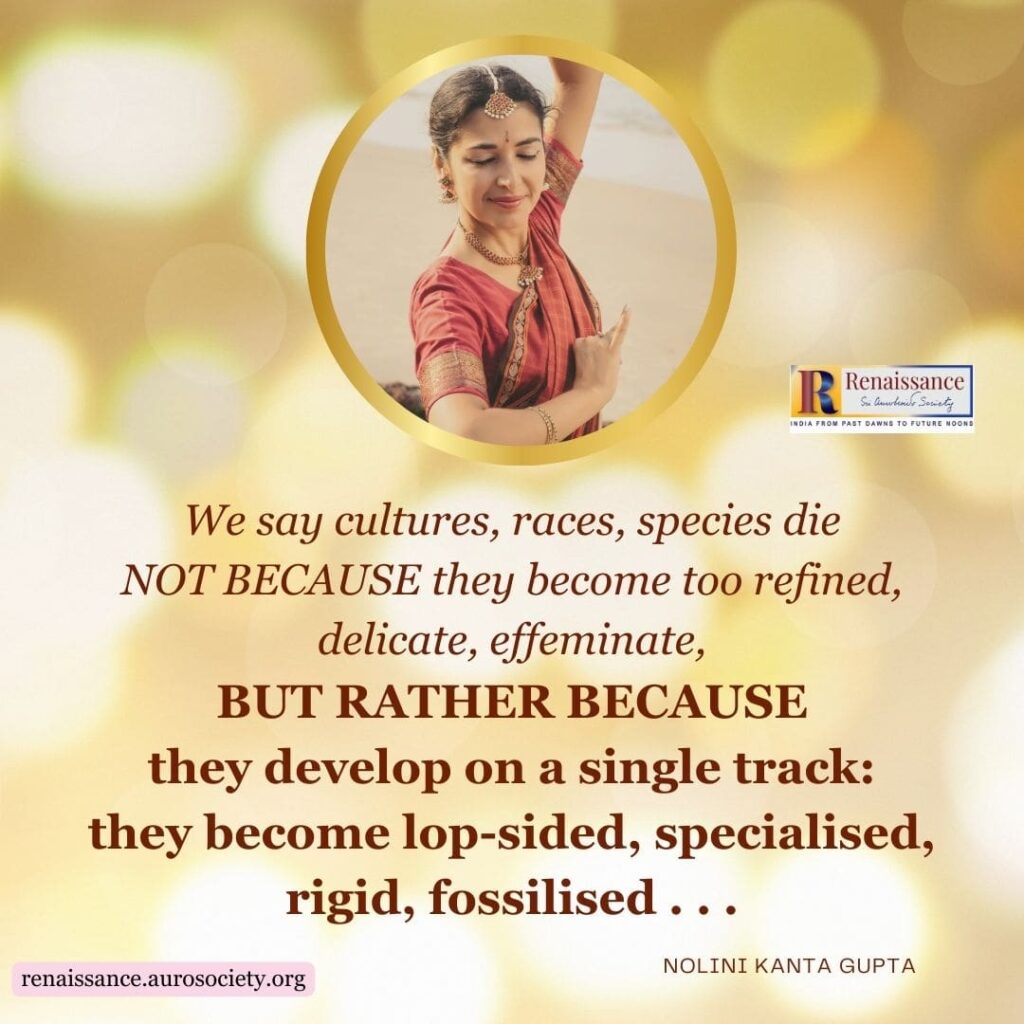
But that perhaps is not the real truth of the matter. It may be considered in a somewhat different perspective.
We say cultures, races, species die not because they become too refined, delicate, effeminate, but rather because they develop on a single track: they become lop-sided, specialised, rigid, fossilised . . .
Circumstances change, the environment brings up new conditions and if the previous form continues in its groove and does not know how to react adequately to the demand, is petrified and unchanging, then it breaks and is thrown away as a thing of the dead past.
A certain plasticity, a good deal of it, a little less finality with regard to structure and function, youthfulness, in one word, is the basic condition of life and life’s progress.
Hence even an immaturity, a certain slowness in pubescence, a longer adolescence signifies a more enduring plasticity, that is to say, the capacity for change and progress. A quick leap into old age and fixity, as is the rule with the lower animals, means arrest of all growth and sooner or later decay and dissolution. Even if such a life-form continues to exist, the existence is only death in life; a fossil exists for millions of years: it is not a significant existence.
If man has maintained a longer and greater youthfulness than his animal forbears, it means he has greater possibilities and through longer vistas of time. But leaving aside the animal creation, if we consider man himself and his prospect, certain conclusions forcibly present themselves which we shall try to clarify.
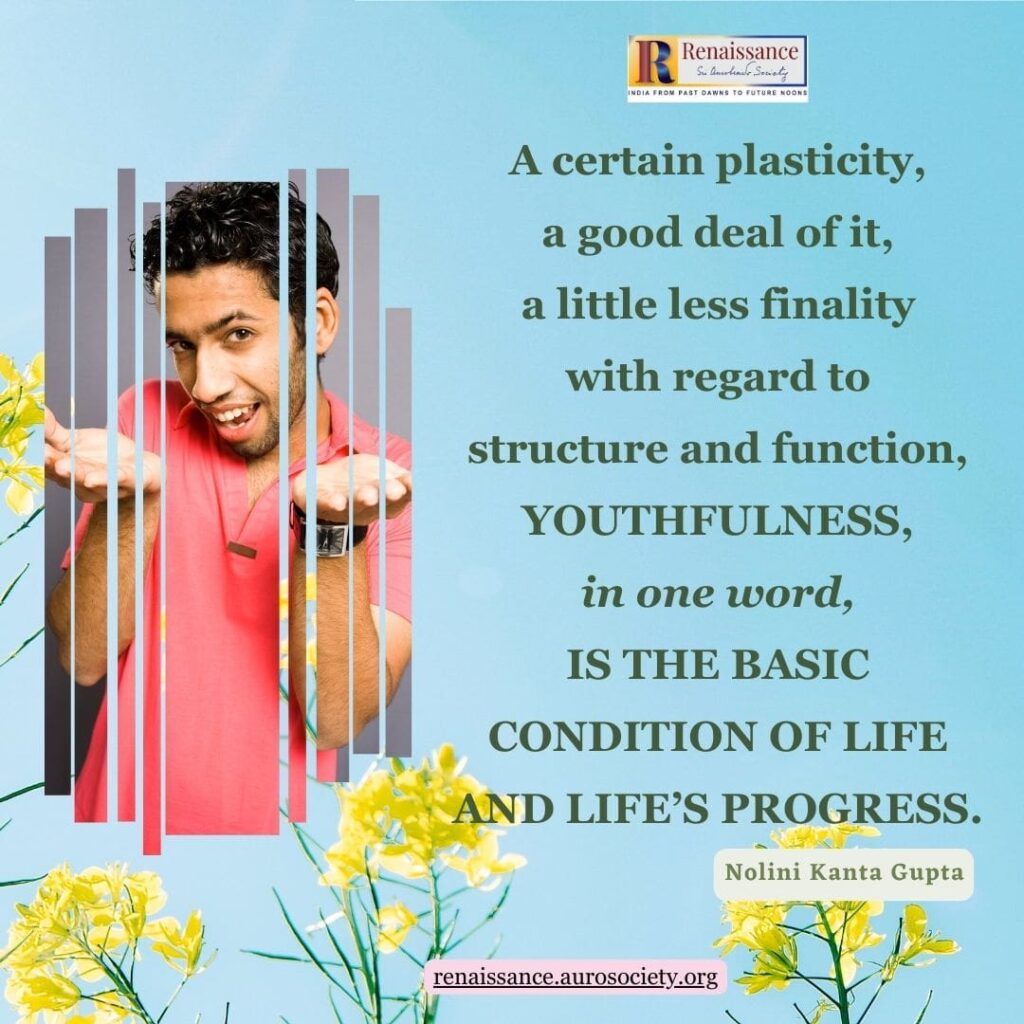
From our archives:
Ancient Hindu Cyclical Theory of Evolution
On a comparatively shorter view of the human evolution we observe as, for example, Spengler has shown, a serial or serials of the rise and fall of races and nations and cultures. Is that a mere repetition, more or less of the same or very similar facts of life, or is there a running thread that points to a growth, at least a movement towards some goal or purpose to attain and fulfil?
The present cycle of humanity, which we may call and is usually called the historic age, dates from the early Egyptians and, in India, from the ancestral Vedic sages (purve pitarah).
On a longer outlook, what has been the nature of man’s curve of life since then to the present day?
Races and cultures have risen and have perished, but they have been pursuing one line, moving towards one direction – the growth of homo fabricus, Man the artisan – the term coined by Nietzsche.
Man has become man through the discovery and use of tools – from tools of stone to tools of iron, that marks his growth from primitiveness to civilisation. And the degree of civilisation, the distance he has travelled from his origins is measured precisely by the development of his tools in respect of precision, variety, efficiency, serviceability.
Viewed from that standpoint the modern man has travelled indeed very far and has civilised himself consummately. For the tools have become the whole man; man has lost his human element and almost become a machine.
A machine cannot run indefinitely, it has got to stop when life is not there. So it is often prognosticated now that man is at the end of his career. He is soon going to be a thing of the past, an extinct race – like one of the prehistoric species that died out because they could not change with the circumstances of life, because they became unchanging, hard and brittle, so to say, and fell to pieces, or otherwise they continued to exist but in a degraded, a mere vegetative form.
But, as we have said, man seems to have yet retained his youthfulness. He always just falls short of the perfect perfection, that is to say, in any single form or expression of life.
Life did become stereotyped, mechanised and therefore fossilised, more or less, in Egypt of the later Dynasties; in India too life did not become less inert and vegetative during two long periods, once just preceding the advent of the Buddha, and a second time just preceding the Moslem advent – and a third time perhaps just preceding the British advent. And yet man has survived all falls and has been reborn and rejuvenated every time he seemed to be off the stage.
Also see:
The Conquest of India by the British
The very lack of perfection and fixity in the human consciousness leaves a kind of plasticity in his nature and therefore an opening towards further life and progress. However perfect man’s sten gun is, it is not as sure and efficient as the bee’s sting. Man outlives, because he progresses, through apparent regressions.
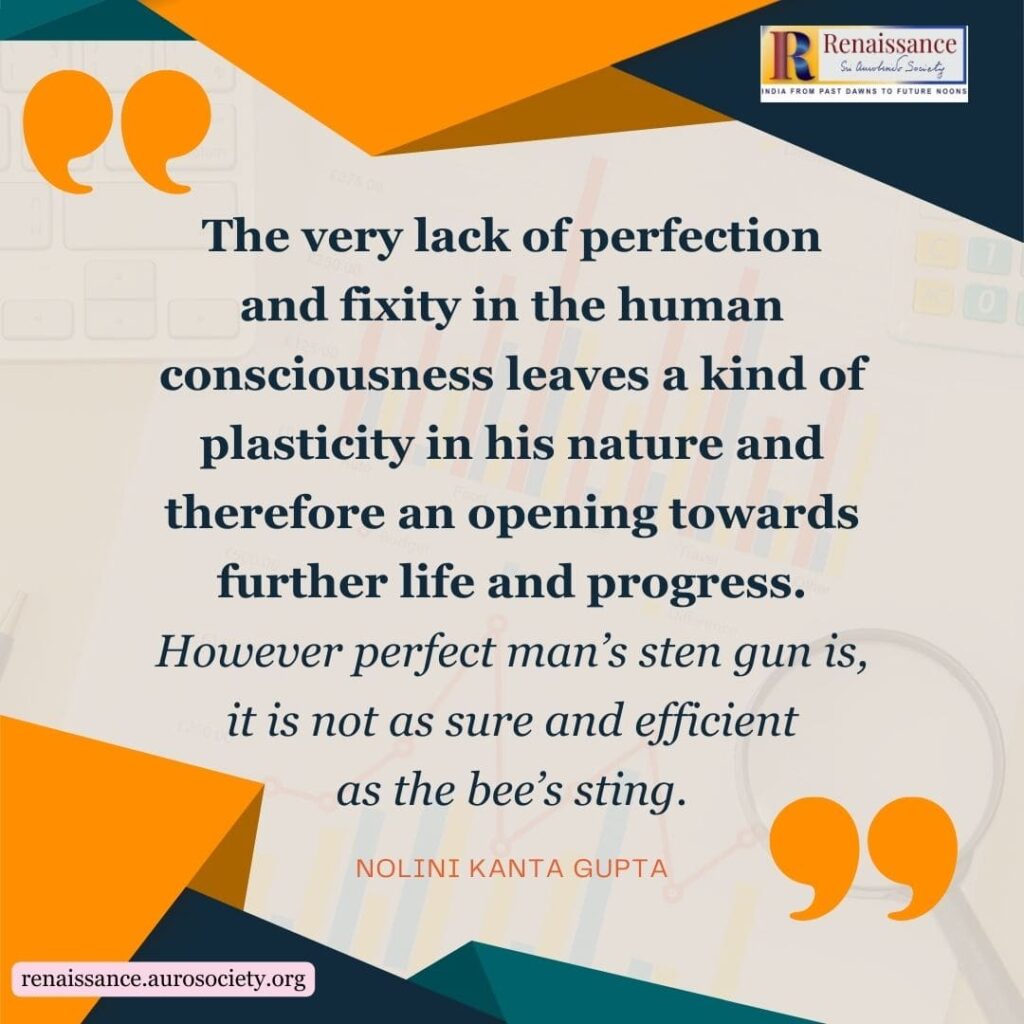
The cycles of human life upon earth are not mere repetitions of the same pattern as some have supposed, they indicate a growth and development.
We have referred to the growth and development in the matter of tools, but that is only a sign and expression of another growth and development – development in mind and consciousness. In the earlier races of mankind there was a vital, a kind of instinctive and intuitive – Bergsonian – light of consciousness; that slowly has grown into a rich intellectual consciousness, and significantly and characteristically, into a more and more self-conscious consciousness. That points to man’s characteristic progressive march through all the changes in his life-pattern.
The danger in the growth and progress of the consciousness is that it progresses along a definite line or lines, cuts out a groove and in the end lands into a blind alley or cul-de-sac.
This, as I have said, is perhaps the original or secret cause of decline and fall of many individual races and nations. But on the whole mankind steps back, it seems, just at the danger-point and escapes the final catastrophe. A new vein of consciousness awakes in man and gives him a new power of self-adjustment.
From Imperial Egypt to, say, modern France or Russia it is a far cry; the two ends give very different connotations of the human consciousness, although there are many things common in certain life-instincts and some broad mental impulsions. And there is not only progress, that is to say, advancement on the same plane, but there is a kind of ascension on a somewhat different plane.
Yajnavalkya represented a type of elite which is far away and far other than that of, for example, Vivekananda today.
We have described man, especially, modern man as homo fabricus; but that is a particular aspect of application of homo intellectualis.
And it is a sign and warning that he must step back and look for a new connotation of his consciousness in order to go forward and continue to exist. If, as we have said in the beginning, man is capable of a durable youthfulness, by his very nature, it means he has a resiliency that will enable him to leap into new conditions and adapt himself to them more easily and without much delay.
Mankind has to enter and is entering into new conditions of life; it has to adopt a new mode of living; and for that a new mode of consciousness is imperative and imminent.
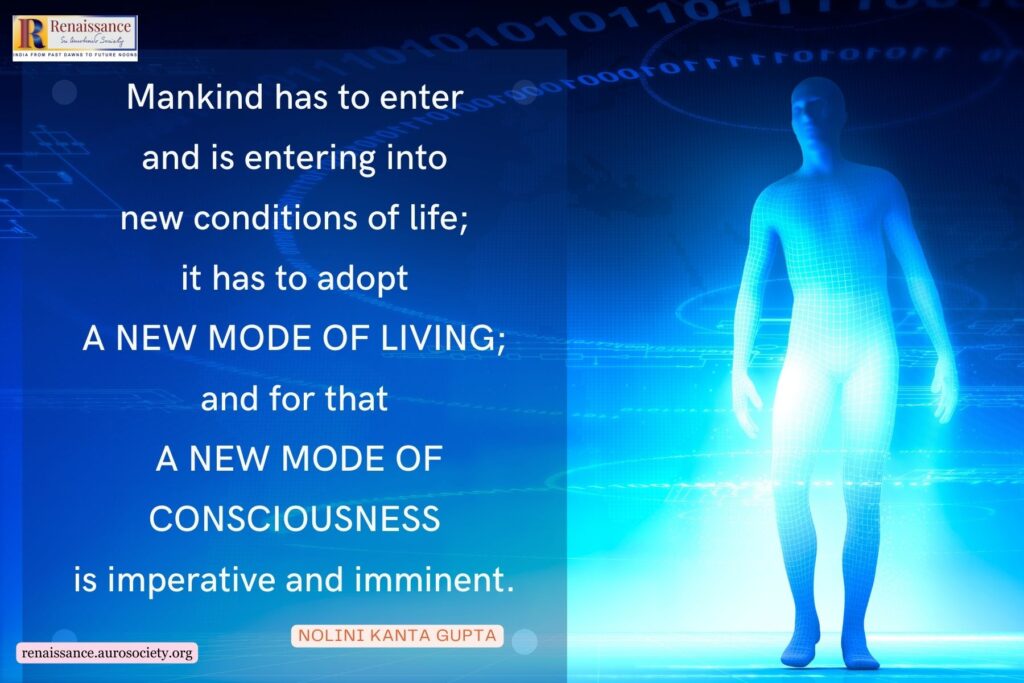
Human history has shown that man is capable of facing catastrophic changes and himself undergoing such changes. At this critical turn of human history where we stand today, man has to choose his destiny – either the Capitol or the Tarpeian Rock, as is in the classical phrase. Either he becomes a new man with a new consciousness or he goes down into inconscience and is no more man.

Notes
[i] See ‘The Immense Journey: An Imaginative Naturalist Explores the Mysteries of Man and Nature’ by Loren Eiseley.
~ Design: Beloo Mehra

